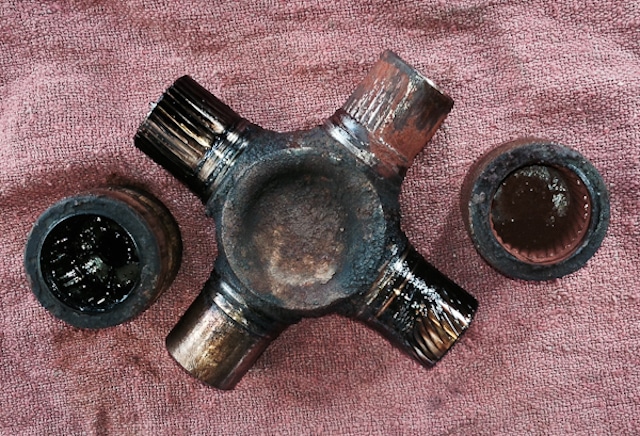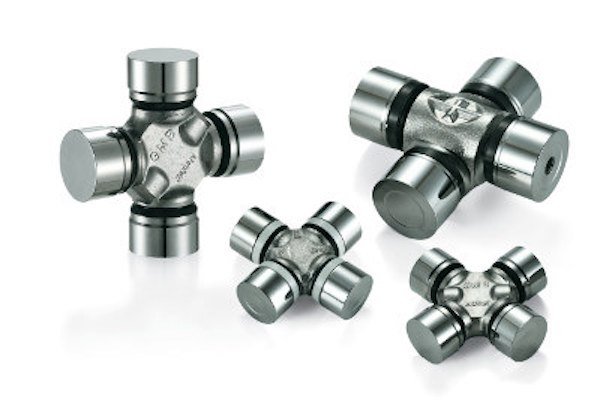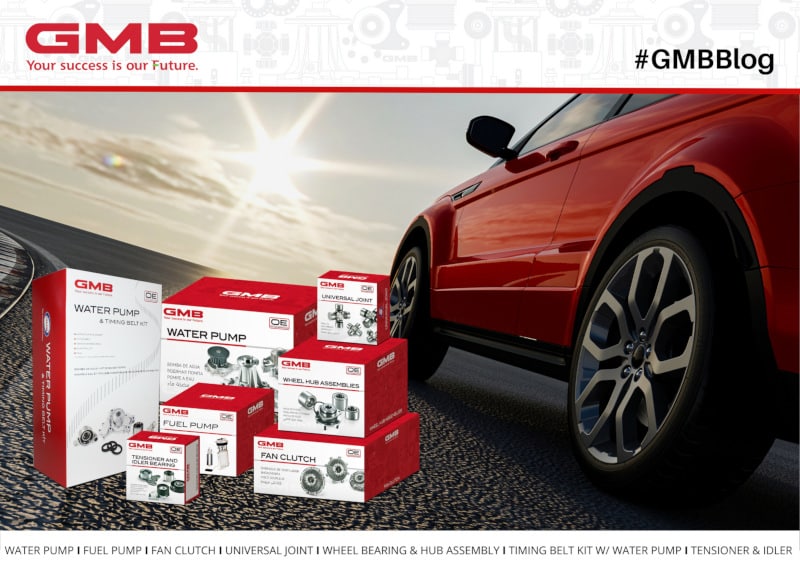Why Replace U-Joints?
Universal joints (also known as U-joints) are critical parts of the driveshaft. U-joints are usually fitted to the following vehicles:
- Rear-wheel-drive trucks
- Four-wheel-drive trucks
- SUVs
- Off-road recreational vehicles
U-joints allow the rear axle, which moves up and down, to receive power from the transmission, which is fixed in place. U-joints don’t last forever. They usually last about 100K miles. Like all car parts, U-joints develop wear and tear over time. When your U-joints fail, it’s very important to replace them as soon as possible. Read on to find out why.
The Main Reasons U-Joints Wear Out

U-joints are strong X-shaped steel parts with a bearing at each end. The design of U-joints enables the driveline to flex while delivering power. Most driveshafts have a U-joint at each end of the driveshaft. This allows flex near the transmission (or transfer case) and near the differential. As the vehicle is moving, the U-joints are constantly flexing when the rear axle moves up and down.
Over time, all this motion leads to wear and tear in the U-joints. There are three main reasons U-joints wear out:
- Age/high mileage – Most U-joints last a long time, but they do eventually wear out.
- Lack of lubrication – Grease-able U-joints should be greased at regular intervals. If this is neglected heat builds up in the U-joints. When this happens, the U-joints lose lubrication and their seals wear out.
- Damage to driveshaft – A minor dent in the driveshaft causes vibration at higher speeds. It may not be all that noticeable while driving, but the vibration is basically pounding on the bearings in the U-joints. This accelerates wear, and will eventually cause the U-joints to fail.
A U-joint can also start wearing out prematurely when its seal(s) fail. These cracked rubber seals will allow dirt and moisture to seep into the U-joints, causing them to wear out faster. (More about u-joint failure here.)
What Happens If You Don’t Replace Your U-Joints

If you neglect to replace your U-joints when they wear out, serious problems will arise. A bad U-joint causes damage from the vibration it creates. A U-joint that completely fails and falls apart can cause even more damage:
1. Transmission Failure
When the U-joint bearings wear down, the driveshaft can move outside of its normal rotational path. This causes imbalance and vibration. This vibration extends to the transmission. It can wear down the transmission tail shaft bushing and damage the transmission output shaft seal. This causes transmission fluid to leak from the rear of the transmission. If the leak is undetected, the transmission can be damaged beyond repair. Even the best case means replacing the transmission (or transfer case) output shaft seal.
2. Differential Damage
This happens in a similar manner to how a transmission might be damaged, but at the other end of the driveshaft. Vibration from a worn U-joint can damage the pinion shaft seal, and possibly the pinion bearing. If a leak occurs and goes undetected, the differential can be damaged.
3. Driveshaft Damage
Some people will ignore vibrations from the driveline and just keep driving. Eventually, a U-joint will completely fail and fall apart under load. This can cause some extreme damage:
- The yoke, which is the portion of the driveshaft where the U-joint mounts, can be twisted and bent. Then the yoke, or the entire driveshaft, has to be replaced, which is expensive.
- One end of the driveshaft can become disconnected. That end then flops around and beats on the underside of the vehicle until it comes to a stop. Other components under the vehicle can be damaged when this happens.
- The sudden loss of power can cause a loss of control. It may also put you at risk if you’re in heavy traffic. The worst-case scenario is for the front of the driveshaft to come loose. It drops to the ground, and if it catches in a pothole, can lift the rear of the vehicle and push it sideways.
No matter what happens when your u-joints fail, there’s one thing that’s certain. You’ll be looking at thousands of dollars in repairs. So if you suspect that your u-joints are about to fail, check them and replace them ASAP.
Which Components To Check When Your U-Joints Fail
It’s important to check the other components along with the U-joints. This way, you can fix any issues you find and prevent your new U-joints from failing soon. When your U-joints start failing, the first parts to check are:
- The pinion seal
- The transmission or transfer case output shaft seal
- The driveshaft slip joint
If these parts aren’t damaged, the problem is likely confined to the U-joint.
Why It’s Important To Use High-Quality Replacement U-Joints

It’s very important to install high-quality U-joints on your truck or SUV. Poor quality U-joints just won’t last as long. Some manufacturers skimp on the quality of the bearings and seals. Others don’t properly lubricate the U-joints when assembling them.
MORE CONTENT
Stay current!
Sign up here to get the latest news
and updates on all things GMB.
Sign Up To Receive GMB News & Updates!

